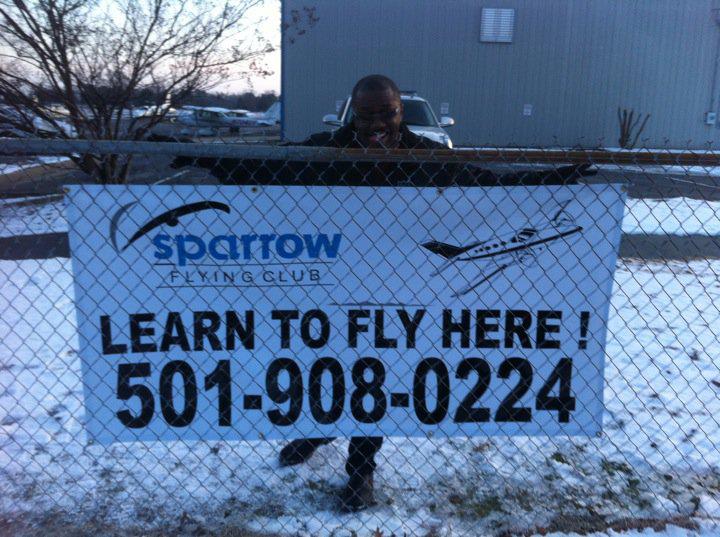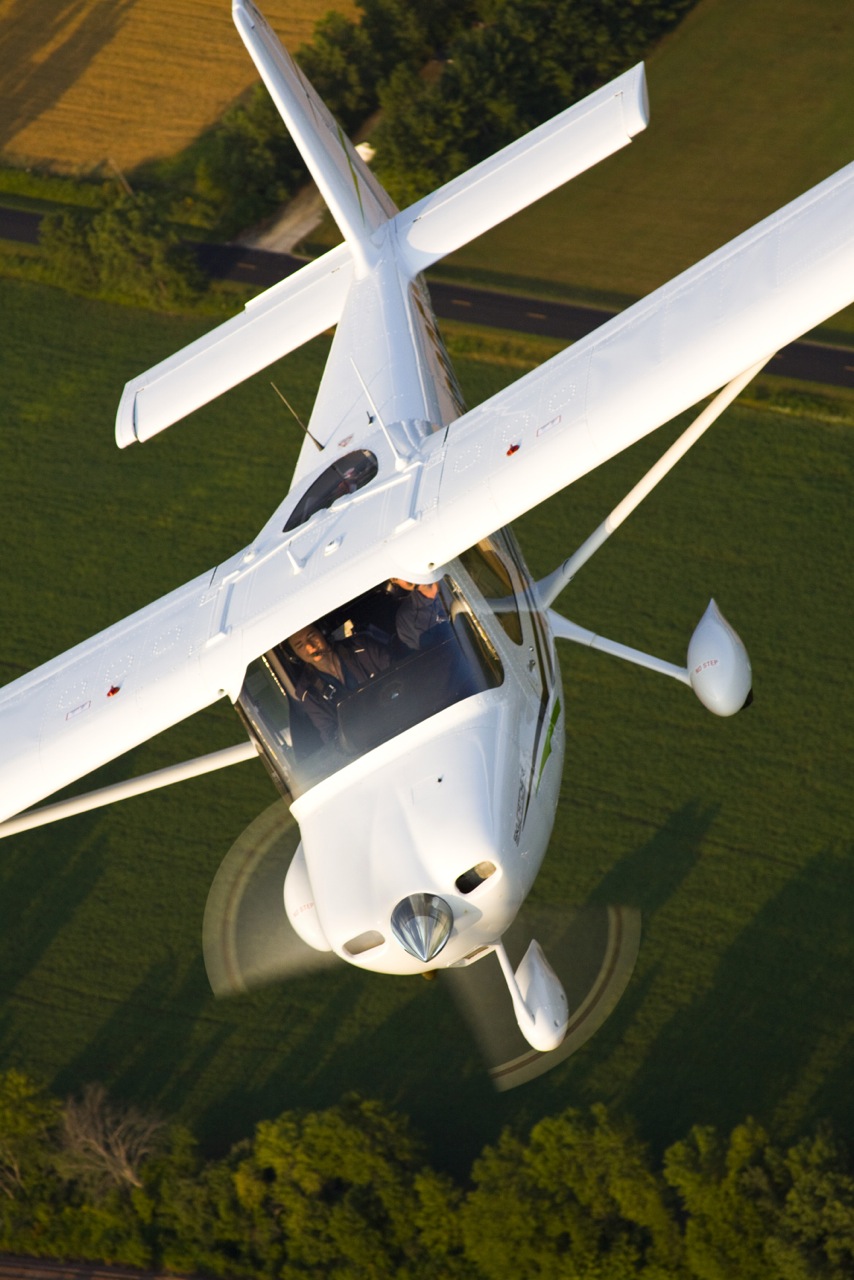
 The Sparrow Flying Club operates nine aircraft from three different airports in Arkansas. The for-profit club provides aircraft owners an opportunity to defray the costs of ownership by leasing their planes to the club. The club handles the accounting, scheduling, and offers owners an opportunity to get insurance through the club’s fleet policy. Owners get to set the rental rate for their aircraft and are responsible for maintenance. In the end, the club has a variety of aircraft available at several locations and owners are able ensure their aircraft are flying more while lowering their out of pocket expenses. Club Founder and President David Jones explains how the club works.
The Sparrow Flying Club operates nine aircraft from three different airports in Arkansas. The for-profit club provides aircraft owners an opportunity to defray the costs of ownership by leasing their planes to the club. The club handles the accounting, scheduling, and offers owners an opportunity to get insurance through the club’s fleet policy. Owners get to set the rental rate for their aircraft and are responsible for maintenance. In the end, the club has a variety of aircraft available at several locations and owners are able ensure their aircraft are flying more while lowering their out of pocket expenses. Club Founder and President David Jones explains how the club works.
Name: Sparrow Flying Club
Location: Cantrell Field (CWS) in Conway; Saline County (SUZ) in Benton; and Russellville (RUE), Arkansas
Website: http://arkansasflyingclub.com
Year formed: 2008
Aircraft: 4 - C-150/152 (between $95 and $115/hr)
1 - C-162 Skycatcher ($110/hr)
3 - C-172 Skyhawks (between $135 and $145/hr)
1 - Mooney TLS Bravo ($275/hr)
Rates: Hobbs hours, wet.
Joining fee: $300 ($99 for public service—military, fire, police, EMS)
Monthly dues: $39 per month
Membership: 70
Scheduler: ScheduleMaster
 Q & A
Q & AAs a for-profit club, I think our readers would be interested in how you got started and what your philosophy is for running your club.
I’m a corporate pilot, I’ve flown to literally hundreds of airports across the country and airplanes aren’t available. Everyday I would fly to two or three airports and I’d start kicking around—is there anybody here renting airplanes, anybody instructing? “Nah, we used to have one, but it closed up. They couldn’t make any money. They’re going broke so it closed up.”
OK, how do we fix that? That’s why I came up with what we’ve got.
Our theory is that there are airplanes sitting at airports that owners would like to have used, but they don’t want the airplane abused and they don’t want it ragged out. What we try to do is help those owners find people that could use their airplane to generate some cash flow, to generate some offset of the aircraft ownership. But it’s not going to generate enough money where it’s going to somehow be a profit center for them. We just love aviation, we just want to see it grow and continue.
How are you organized?
The Sparrow Flying Club is an LLC. There are two partners—my wife and I are 50 percent of the partnership and Charles Brantley is the other 50 percent. Brantley is a Delta Air Lines captain and I’m a corporate pilot.
We have one person who we pay an hourly rate to check Hobbs meters, deal with insurance, take care of changes to membership, and take care of the accounting process for us. We also have a flight instructor, who also is one of our aircraft owners, who we pay to do what I call operations management. He takes care of those day-to-day things that need to be taken care of.
How did the club start?
In 2006, we bought a 152 and a 172 and put them out at the airport just as rental airplanes. Then we started formulating this idea of forming a club. When we formed the club in 2008 we rolled those airplanes into the club by leasing them to the flying club.
After about a year we decided that we needed to have an airplane that gave people a reason to be in the club. A 152 and 172 are not very exciting airplanes, you can rent those anywhere. So my partners and I bought a new Flight Design CTLS and put it into the club.
Club members would come to me and ask, “If I buy an airplane can I lease it back to the club?” So they own it and have a lease back to us. The majority of these people are going to own the airplane regardless of us. We are just a way to for them to get enough revenue to cover their insurance. Then that’s one fixed cost somebody else is paying for.
How many aircraft do you have now?
We have nine airplanes right now—two 152s, two 150s, three 172s, a 162, and a Mooney M20M.
A year ago the CTLS had a hard landing and broke a landing gear and did some other damage. We wound up just scrapping the airplane. When our LSA bit the dust last year, one of club members came to us and said he wanted to buy an airplane and put it into the club on leaseback, which is how we got the Skycatcher.
How important has having an LSA been to the expansion of the club?
It has been important. It hasn’t been an overwhelming success but it’s definitely made the difference in a good 15 or 20 people joining in the club. If you figure there are 70 people in the club, that’s a good 20 or 25 percent are there because we have an LSA.
How much do you charge for the different aircraft?
Each owner chooses what they want to charge. You figure out what the fixed costs are and what the direct operating costs are and you put that into a spreadsheet. If you charge $X an hour, than it would need to fly X number of hours in order to have cash flow, or if you plan on flying it this many hours, than it will take this many dollars for it to have cash flow. So we generally come up with what we think is a realistic number of use. I try to allow as much individualism as possible.
Does one airplane fly more than another because of where it’s based?
Yes. That’s directly related to flight instructors at the airport. There are a few key elements: the flight instructor, the aircraft—how they look and how well they’re maintained and kept—and the owner. Our owners have to be involved.
The owner makes decisions about where the airplane goes to maintenance, who does the maintenance, what parts get replaced. The owner is 100 percent involved in the maintenance of the airplane.
Does the owner pay for all of the maintenance?
Yes. The owner pays for all the maintenance. Our prices are wet and the owner pays for the fuel when it’s put in the airplane. That comes out of the owners’ paycheck.
How does scheduling work?
If someone wants an airplane, they go on ScheduleMaster, they schedule it, and go fly. When they come back they go to what’s called post flight in ScheduleMaster and they pay for the flight.
The owners book their time through ScheduleMaster like everybody else. We are able to set up a different rate for them if they want. Some of them don’t want to pay anything. That’s’ fine. We’ll set up whatever rate they want as the owner rate.
How does the accounting work? Do you reimburse the owners monthly?
Every week the owner has to go out and check the Hobbs meter on the airplane and fax it to us because we’ve got to have that check against the rental on the airplane in our system. We take that and compare it to ScheduleMaster and what’s been paid for [by the member] and so it’s dependent on the aircraft owner to get out there and get their sheets turned in. And they’re watching what’s going on with the airplane.
At the end of the month the owner reports the time, we take care of any discrepancies, and deduct any expenses the club actually pays for. For instance if an owner needed a tire replaced on an airplane and was out of town, and we needed the airplane up and running, I would talk to the owner and ask what can I do to help. If I pay for it and put the airplane back on the line, I’ll make an expense against the airplane in the accounting system that comes out of the revenue. We don’t do that often but it’s possible.
How does the insurance work?
We carry an insurance policy that says we’re able to get a fleet rate. I don’t require individuals to put the airplane on the policy we’re on, but everybody has so far. If they want to get their own policy somewhere, all they have to do is provide the club with the policy showing it’s covered and then they can pay for their own policy. Otherwise we are set up on a fleet policy and we have a reporter cost, so we just pay every month. We work to generate enough revenue to cover the insurance.
How have you successfully expanded to three airports?
One of the things we’ve learned is for a location to be successful you’ve got to have an active instructor and/or a hands-on owner. Of course I’m a hands on owner but the plane is 30 or 40 miles from where I am and my time is very limited. I’m gone all the time. I can’t be an actively engaged owner at that airport. So that became a problem. So we figured out I can’t just take an airplane out and sit it out there and expect someone else to watch over it and run it. You need an individual in that location that owns the airplane there to make that airplane available.
Do you have club flight instructors?
Right now we have 10 active instructors. There are two instructing at Saline County, the other eight are at Conway. The instructors don’t work for us, we take no money from the instructor pay. The instructor can do his job, give away his time if he wants to or charge a $100 an hour if he wants to.
Does an instructor have to be a club member to instruct in the aircraft?
No. The way we see it, if a member has use of the airplane as a member and if they want to hire somebody to fly with them in that airplane they can do that. Now the first thing they have to do is meet our qualifications and our insurance requirements.
Do you do any events?
Every week we do a free ground school and every month we have a breakfast that we cover different topics. Last month we did wind shear and thunderstorms. You’ll get your $39 value every week even if you don’t go flying.